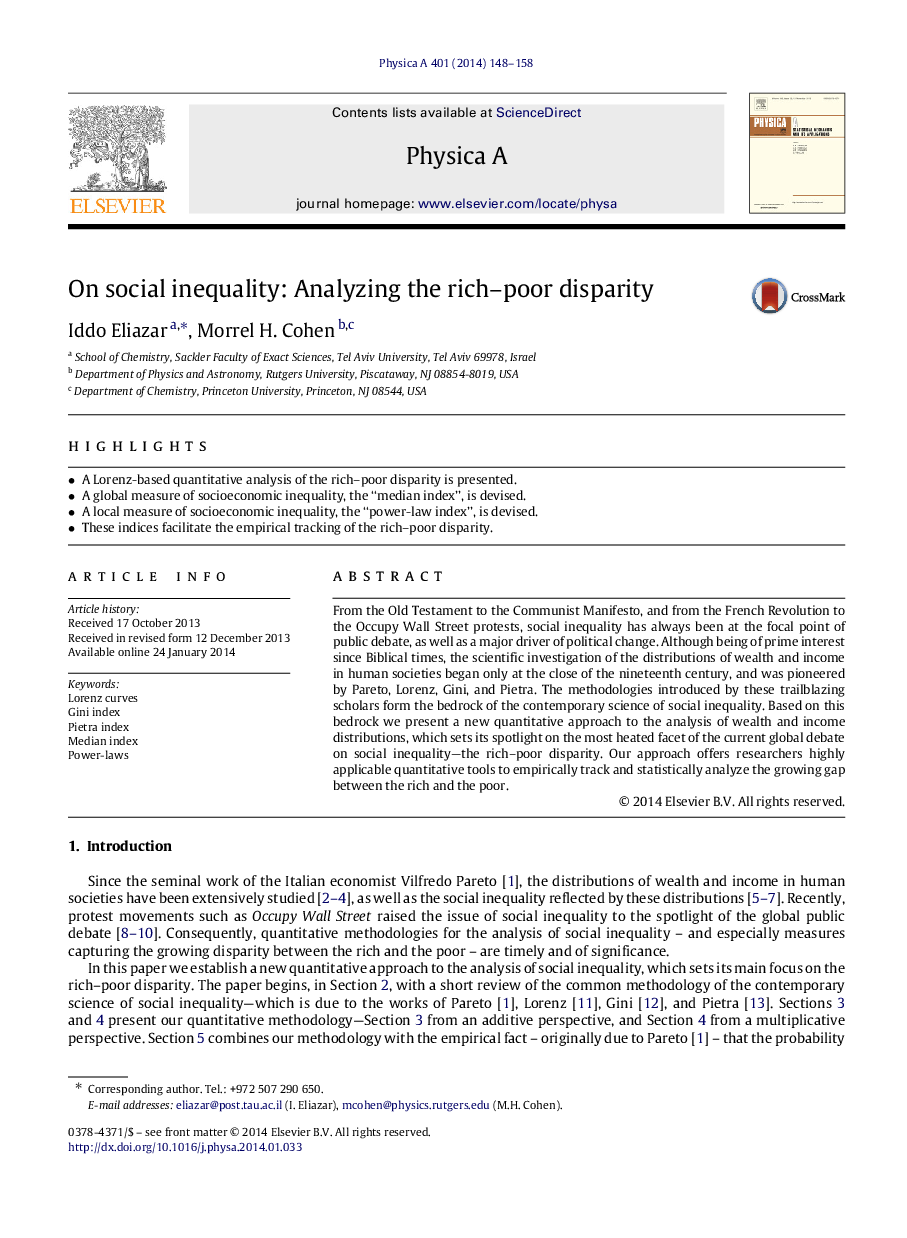| Article ID | Journal | Published Year | Pages | File Type |
|---|---|---|---|---|
| 975543 | Physica A: Statistical Mechanics and its Applications | 2014 | 11 Pages |
•A Lorenz-based quantitative analysis of the rich–poor disparity is presented.•A global measure of socioeconomic inequality, the “median index”, is devised.•A local measure of socioeconomic inequality, the “power-law index”, is devised.•These indices facilitate the empirical tracking of the rich–poor disparity.
From the Old Testament to the Communist Manifesto, and from the French Revolution to the Occupy Wall Street protests, social inequality has always been at the focal point of public debate, as well as a major driver of political change. Although being of prime interest since Biblical times, the scientific investigation of the distributions of wealth and income in human societies began only at the close of the nineteenth century, and was pioneered by Pareto, Lorenz, Gini, and Pietra. The methodologies introduced by these trailblazing scholars form the bedrock of the contemporary science of social inequality. Based on this bedrock we present a new quantitative approach to the analysis of wealth and income distributions, which sets its spotlight on the most heated facet of the current global debate on social inequality—the rich–poor disparity. Our approach offers researchers highly applicable quantitative tools to empirically track and statistically analyze the growing gap between the rich and the poor.
